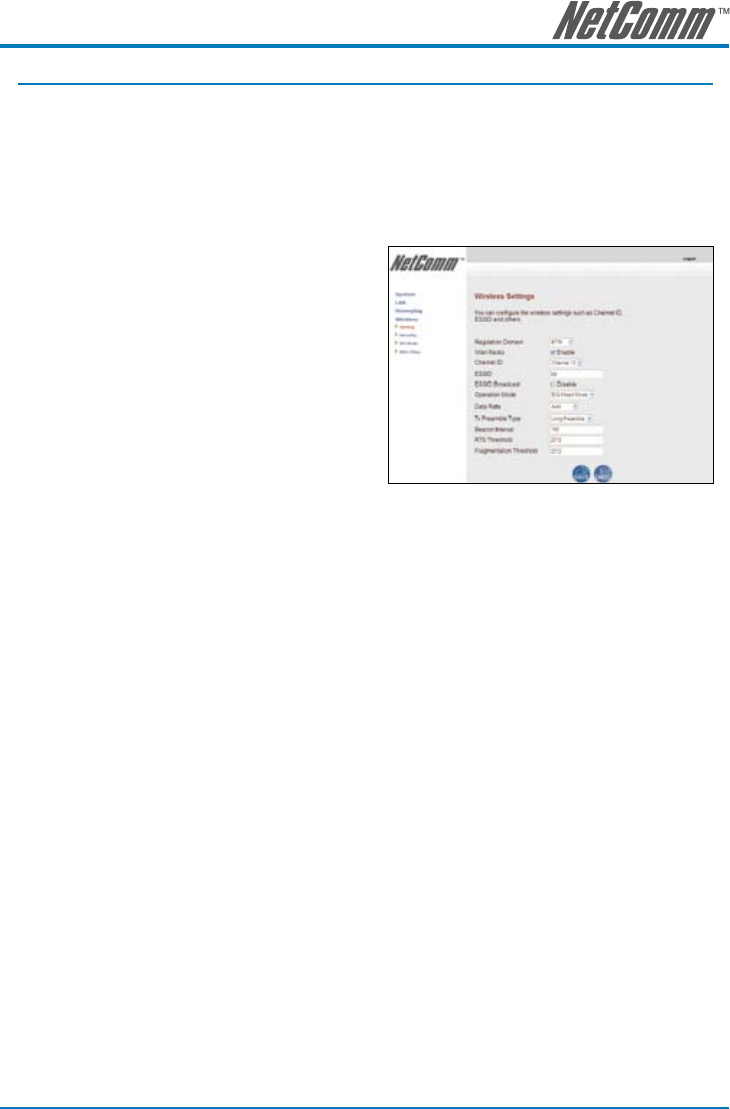
NP290W User Guide 15
YML849Rev 1
Chapter 8 – Wireless Settings
Wireless Settings allow you to make custom changes to your wireless access point.
8.1 Settings
By default, the Extended Service Set Identifier (ESSID/SSID) is yournetworkname. ESSID/SSID is also
known as the name of the wireless network where your wireless devices connect. This is case sensitive and
is also used to uniquely identify a group of wireless devices.
To configure the wireless settings:
1. From the Web User Interface, click
Wireless Menu.
2. Select Settings. This opens the Wireless
Settings page.
3. Uncheck WLAN Radio to disable the
HomePlug Wireless Access Point if you
wish to prevent the device from emitting
any wireless signal. Otherwise, leave this
unchanged.
4. Select a Channel ID.
5. Enter the ESSID/SSID. ESSID/SSID refers to the name of your wireless network.
The default
ESSID/SSID is yournetworkname.
6. Check ESSID Broadcast to prevent the HomePlug Wireless Access Point from transmitting its
ESSID/SSID publically. Otherwise, leave this unchanged.
7. Select an Operation Mode.
a. B Mode Only – allows devices using the B protocol to connect into the network. B is a WiFi
standard that uses the 2.4 GHZ band to transmit data at the maximum rate of 11 Mbps.
b. G Mode Only – allows devices using the G protocol to connect into the network. G is a WiFi
standard that uses the 2.4 GHZ band to transmit data at the maximum rate of 54 Mbps.
c. B/G Mixed Mode – allows devices using B and G protocols to connect into the
wireless network.
8. Select a Data Rate.
9. Select Tx Preamble Type
a. Short Preamble
b. Long Preamble
c. Auto
10. Enter the Beacon Interval. This specifies the interval when transmitting packet broadcasts. The
default value is 200 milliseconds. You can enter 1 to 65525. Otherwise, leave this unchanged.
11. Enter RTS Threshold. When you encounter inconsistent data flow, you can apply minimal
reduction from the default 2347 value. Otherwise, leave this unchanged.
12. Enter Fragmentation Threshold. This specifies the maximum packet size before data is
fragmented. In most cases, this should stay at the default value of 2346. If you experience a
high packet error rate, you may slightly increase the value. Setting the value too low may result
in poor network performance. Otherwise, leave this unchanged.
13. Click Save.


















